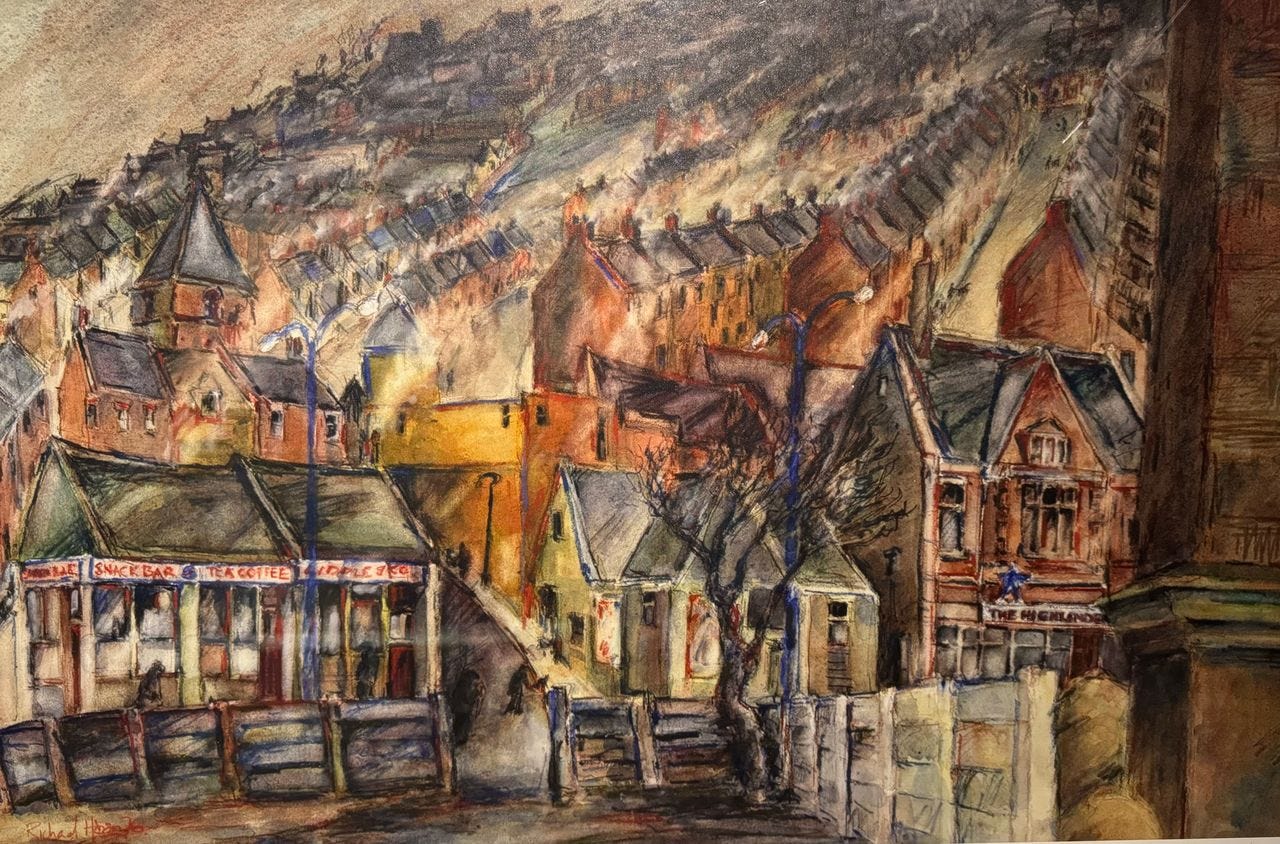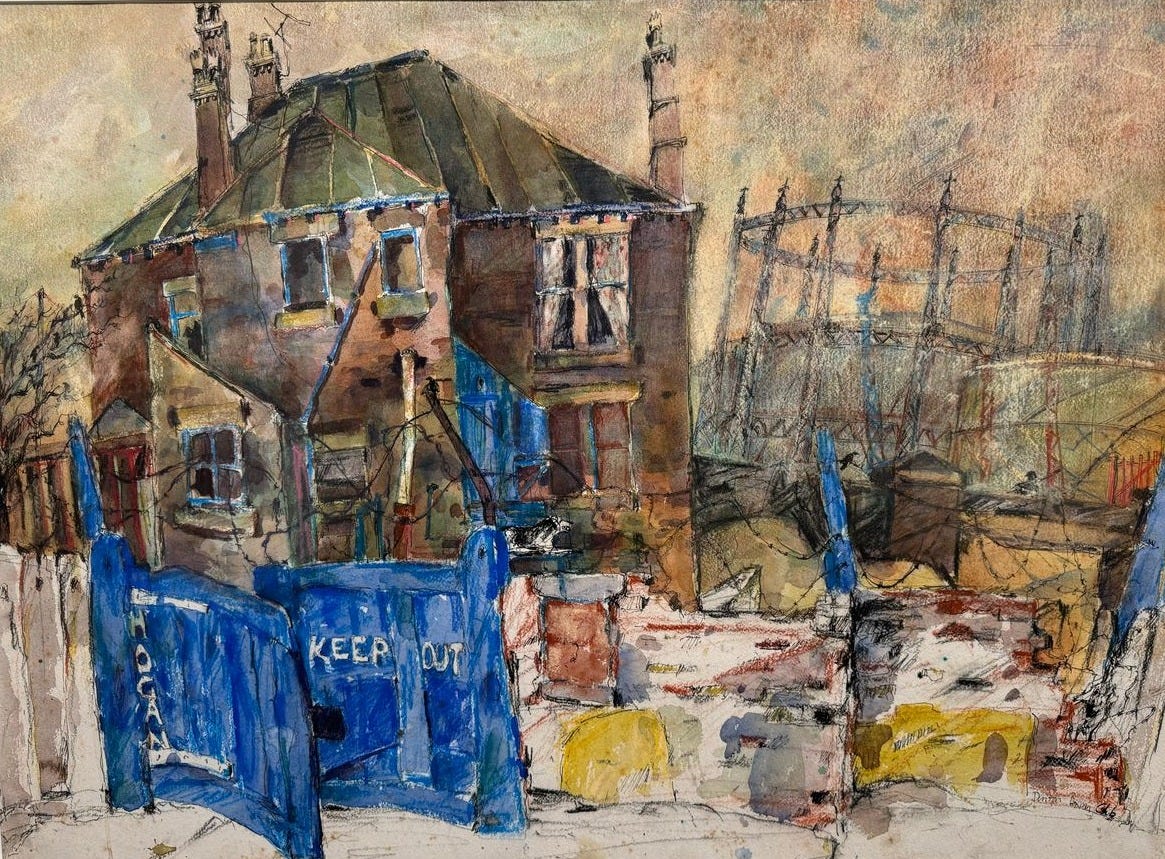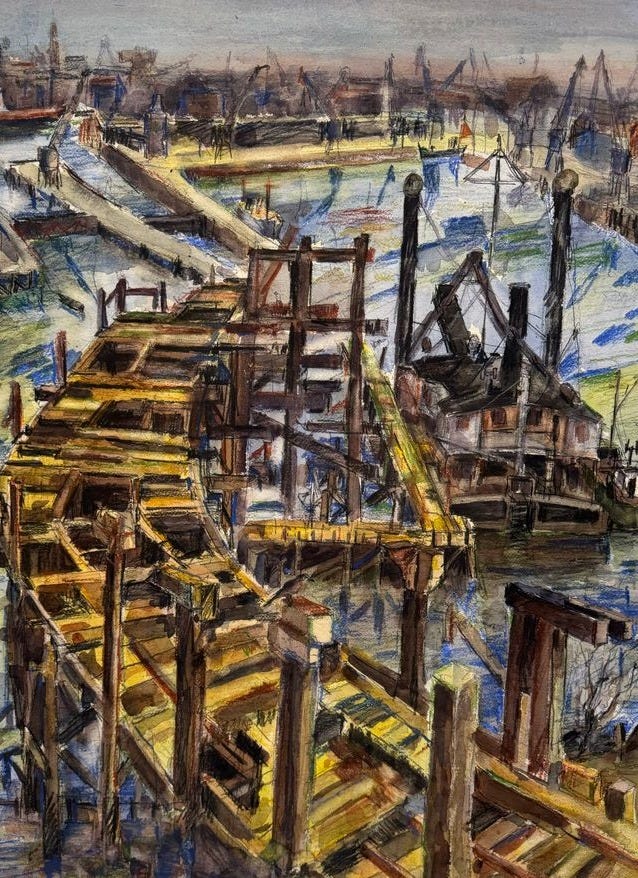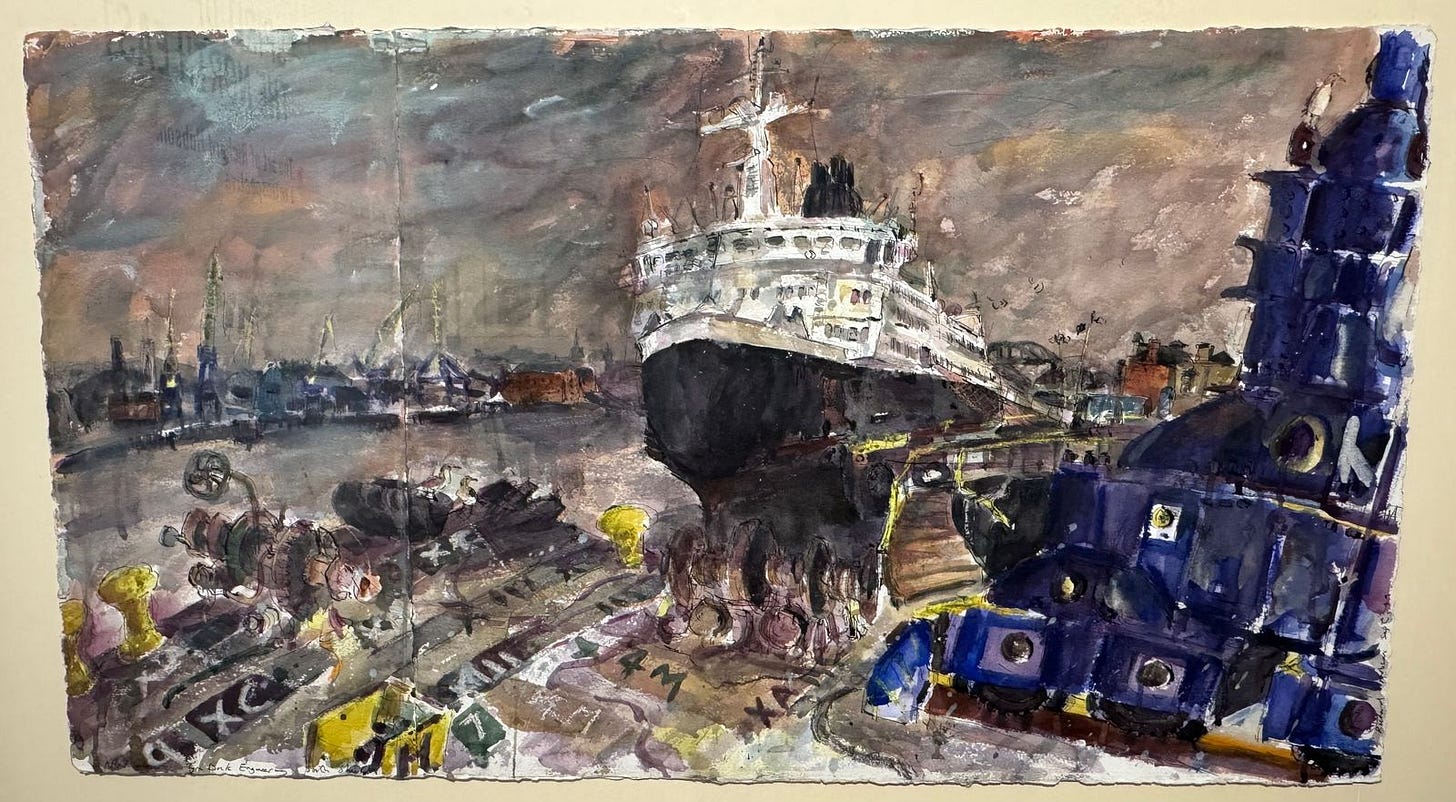Exhibition shines light on artist’s powerful record of the North East
A retrospective in South Shields offers a tribute to Richard Hobson who captured a vanishing landscape in the region. Tony Henderson reports
The pace of change, which saw the industrial landscape of the North East vanish as its mines, shipyards and major factories disappeared, was dizzying.
But some things stayed the same, from the region’s coastline to its uplands. Fortunately, artist Richard Hobson was there to record it all.
He painted how people worked, played and lived, in the rural landscape and also the packed urban terrace rows with their smoking chimneys.
An exhibition of his work at South Shields Museum & Art Gallery, titled Spirit of the North East: The Art of Richard Hobson, a Retrospective, runs until December 6.
Richard died in 2004 aged 59, and the exhibition marks what would have been his 80th birthday year.
“Richard Hobson’s achievement deserves much greater recognition. His paintings, as well as being accomplished artworks, are an important record of the social history of the North East,” says Geoff Woodward, museum manager North and South Tyneside at North East Museums.
“They captured the essence of the region, from the shipyards of the Tyne and the cooling towers of power stations, to the wildness of the uplands and the coast, at a time when our familiar landscapes were on the cusp of great change.
“His works also speak of our relationship with our environment and the overlap and intermingling of the urban and natural worlds — a message that resonates with us more deeply as we face climate change and the threatening results of our industrial development.
“The energy and passion of his brushstrokes and colours breathed beauty into what were often stark and gritty subjects. Yet his legacy is not just powerful, dynamic canvases, but a crucial visual archive of a landscape now transformed, and industries and communities that have disappeared into cultural memory.”
Richard’s family lived in Heaton in Newcastle, where he went to school.
His father Alfred was a lecturer at Durham University and wrote guidebooks on Northumberland. Richard was able to show off his early talent for art by drawing illustrations for the books, accompanying his father on long hikes in the Northumbrian countryside.
After training in Newcastle and London, he moved to the Cairngorms, where he worked as a warden at an ospreys nature reserve.
His wife Pat says: “Richard loved being close to nature, and especially birdlife, and he continued to paint.”
Then came a turning point, when he studied for a diploma in the conservation of easel paintings at Gateshead College. That led to the post of paintings conservator at The Bowes Museum in Barnard Castle, where he would work for 31 years.
“He loved being a conservator, working on some of the world’s greatest artworks at The Bowes, as well as freelance projects for other clients such as the National Trust, and restoring miners’ lodge banners,” says Pat.
His three-day-a-week contract at The Bowes gave Richard the time he wanted to continue to create his own art.
Pat says: “Painting was part of him. He was a man of the North East and he was imbued with it.
“One of the things I feel about Richard’s work is that the subject matter has endured the passage of time. The subject matter still resonates for many people of a certain age. There is an undoubted sense of loss — the mines, the shipyards and other heavy industry including agriculture still stir up a certain nostalgia for many people.
“Richard painted these scenes because he saw beauty in them — the subject matter is very much of the North East, our spirit.
“His love of art was intrinsic. It came from deep within him. He lived for his art.”
Richard’s friend and fellow Northumbrian artist, the late Birtley Aris, wrote: “He captured the essence of the Northern landscape, expressing the bleakness and the beauty without going for the simply picturesque.”
Many of the artworks on display are available to buy.
A private event at the South Shields gallery on November 18 will celebrate the exhibition and Richard’s life, when a gathering of musicians will play music of the Northumbrian landscape he loved.






Richard was a super guy to know and very knowledgeable about art. Died long before his time. As well as his art practice, which was very distinctive but also of its time stylistically as well as in subject matter, he worked at the Bowes Museum so knew the collection there very well. He lived in Ryton from the time before Stella Power Station was demolished so I'm hoping there will be some paintings of that stretch of the Tyne.